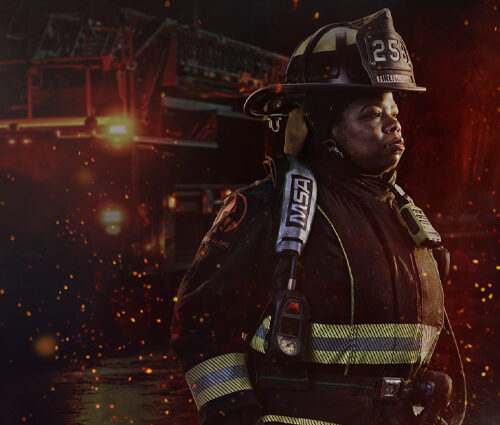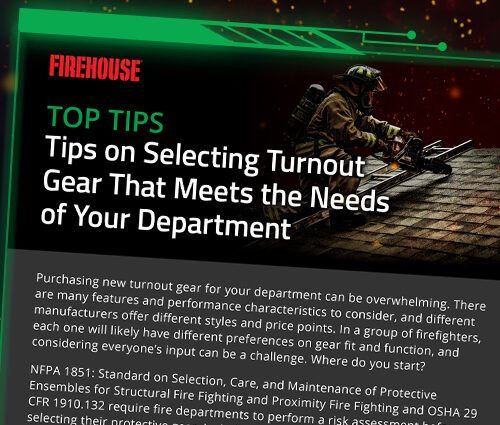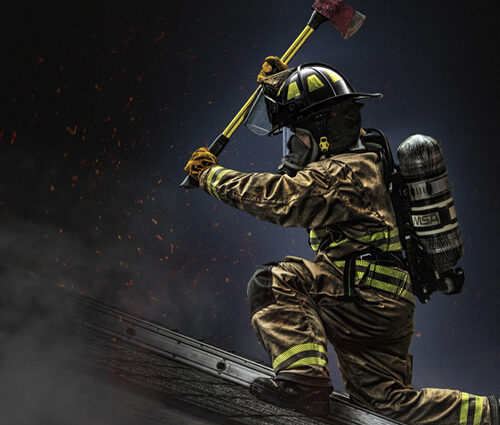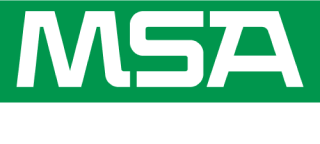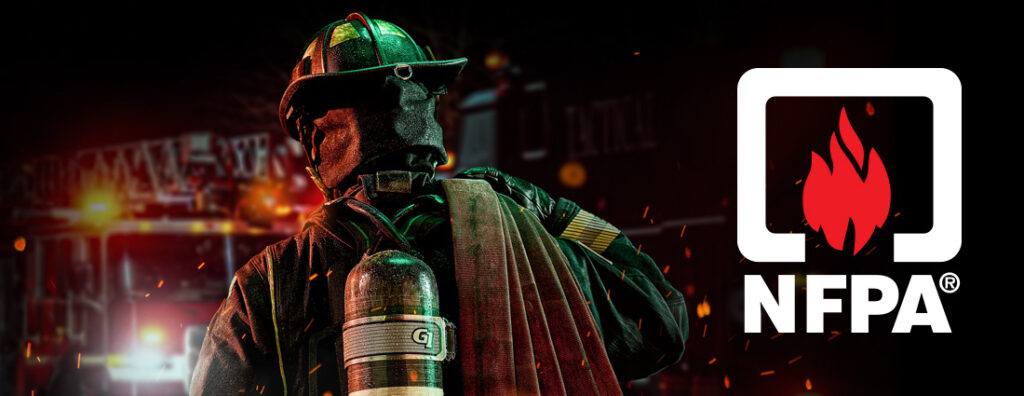
Laura Neitzel | FireRescue1 | BrandFocus Staff
Every five years, the National Fire Protection Association (NFPA) reviews and updates standards to keep abreast of scientific advances, new product capabilities and rigorous testing improvements, all to address firefighter health and safety.
NFPA is currently in the process of consolidating NFPA 1971, covering turnout gear, and NFPA 1981, for self-contained breathing apparatus (SBCA), into one comprehensive standard – NFPA 1970 – that also incorporates station/work uniforms (NFPA 1975) and personal alert safety systems (PASS) (NFPA 1982).
Recently, MSA Safety hosted a webinar exploring the finer details of the consolidation as it relates to PPE and SCBA. Leading the discussion were Jeff Stull, an expert in PPE design evaluation and selection and a member of several NFPA technical committees, and Matt Cox, battalion chief for Fairfax County Fire and Rescue in Virginia.
The discussion included how the NFPA process works to address firefighter protection needs, the significant changes that will be applied in NFPA 1971 and NFPA 1981, and overall implications of the new standards for the fire service.
Following are key takeaways from this webinar, which you can view on demand here.
Purpose. The consolidation of standards associated with structural firefighting – protective clothing (including turnout gear), work uniforms, SCBA and PASS – will become NFPA 1970. The hope is the consolidation will make the standards easier and create a synergy where similar requirements are grouped together, ultimately for the benefit of end users.
Effective dates. The new NFPA 1970 standard is expected to be promulgated in August 2024. Any new products certified after this date will need to meet these new requirements. Products that meet the older edition will have an 18-month grace period to continue to be sold until manufacturers bring their products up to the new standard.
New requirements for hoods. All structural firefighting hoods will need to have particulate blocking capabilities under the new standard. This will increase protection against particles and chemicals reaching the skin.
“Under the new standard, all structural firefighting hoods will have to have particulate blocking capabilities. So, any of those departments or firefighters that are now using the regular knit hoods … that’s going to be a very noticeable difference.”
Jeff Stull
The new hoods will have a slight impact on breathability and some manufacturers will have to introduce multiple sizes. Some existing products may not meet the new requirements, and the hoods will likely become more expensive due to the additional capabilities.
Increasing protection in one area may come at the expense of another, such as comfort and breathability.
PFAS-free labeling. New standards will require gear to be labeled as PFAS-free. This will involve testing and verification processes to ensure no PFAS has been incorporated into the product. Many states already require manufacturers to disclose if they have PFAS in their product and have banned firefighting foams. The change will facilitate standardizing and demonstrating these claims. Challenges remain in achieving PFAS-free labeling and related standards, with some areas achieved and others still progressing.
“We know this is an evolving topic where we’re trying to get the metrics correct, we’re trying to make sure that claims are accurate, and we want to provide the fire service with the opportunity to choose that gear if it so exists. This is an area that the standard is trying to facilitate … making sure that these claims are standardized and demonstrated adequately.”
Jeff Stull
Rating electronics for explosive environments. Given that more functions for SCBA are electronic in nature – such as heads-up displays, accountability software, and integrated thermal imaging and communications – intrinsic safety is a key concern as firefighters navigate the “Immediately Dangerous to Life or Health” (IDLH) environment. NFPA 1970 will include new criteria for rating devices for explosive environments.
“It’s paramount we understand how our equipment will react with the IDLH environment.”
Matt Cox
End-of-service time indicator. One significant change is the modification of the end-of-service time indicator (EOSTI) for SCBA. The new rule aims to divide the allowable breathing air into three increments: one third for work completion, one third for structure exit and one third as an emergency reserve.
“The standard may affect the time you spend in a structure fire. Understanding how far and how long you and your crew may operate in a structure will allow a proper risk assessment by unit officers and command.”
Matt Cox
Visual alerting for wireless interfaces. Additionally, given the increasing complexity of modern connectivity and critical role communication plays in firefighter safety, NFPA 1970 will also establish criteria for wireless interfaces from SCBA to other devices. This will include the requirement of a HUD visual alert to indicate connection of devices.
PASS device alarm tone. Similarly, the standard incorporates a new universal PASS tone to aid audible detection by the human ear.
Universal Emergency Breathing Safety System. The Universal Emergency Breathing Safety System (UEBSS) supports a buddy breathing operation between two users with compatible SCBA. The universal system will allow buddy breathing regardless of the vendor, says Cox.
Removable soft goods. Because of the importance of cancer-prevention measures, the updated NFPA standards will likely require manufacturers to make it easier to remove soft goods in SCBA so these items can be separately cleaned.
Gross decontamination. It’s a challenge to get firefighters to comply with gross decontamination procedures, says Cox. Requirements of the new standard will facilitate gross decontamination. It will also govern details like second stage regulator retention and removal.
“This seems self-explanatory, but it’s a part of our modern day SCBA. And NFPA has added the text to the standard to ensure compliance. This is an example of the manufacturer staying ahead of the industry and ensuring firefighter safety is priority number one.”
Matt Cox
While the new NFPA 1970 consolidation remains in development, it is expected to offer forward progress that makes it easier for manufacturers and firefighters to adhere to specifications and procedures that enhance the health and safety of firefighters on and off the fireground.
Visit MSA Safety for more information on fire service solutions.
This article reprinted with permission of FireRescue1.


